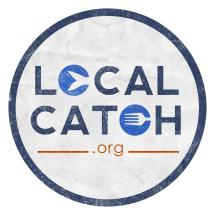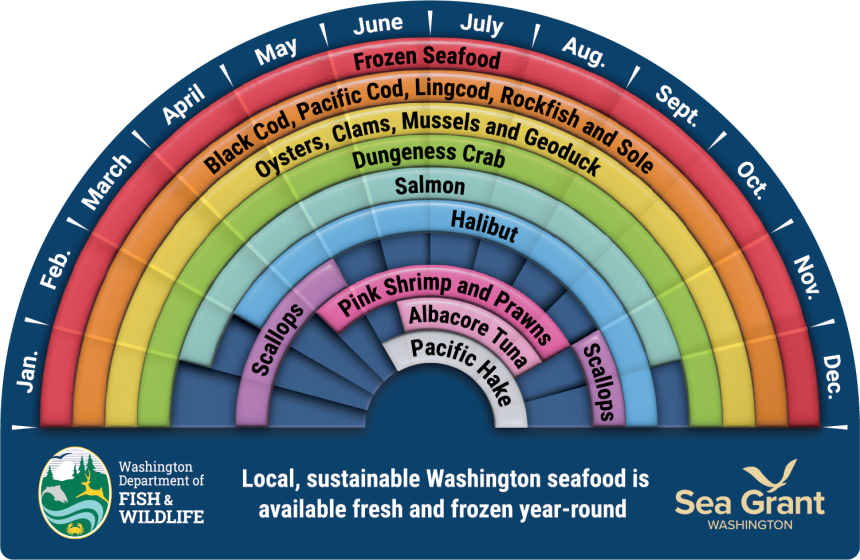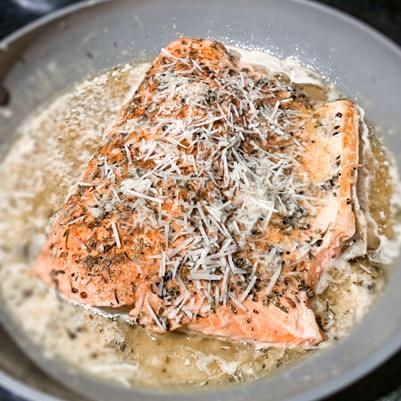
As a Washingtonian, you’re going to want to take part in our state's amazing access to local seafood. Even if not bringing in the catch yourself, plan your visits to local markets to realize the full bounty of the Pacific Northwest.
Find Washington seafood near you with the help of Local Catch, a network of supported fisheries and small-scale harvesters.
When to enjoy Washington seafood

Fishing, crabbing and shrimping are part of our state’s heritage. Communities dotting Washington’s coastline play host to a small commercial fleet. As you visit one of the state’s 75 ports, say hello to the fishers who captain the vessels that put 20,000+ people to work each year in living-wage jobs. Their labor drives a $600,000,000+ economic benefit to our state and delivers healthy, sustainable Washington seafood to families' tables across the state.
To protect these, WDFW staff use some of the world’s most advanced fish and shellfish monitoring science. Learn more below.
Dungeness Crab
Dungeness crab is comercially harvested off the coast and in the Puget Sound. The main ports of landing for the coastal commercial Dungeness crab fishery are Ilwaco, Chinook, Westport, Tokeland, and La Push, where the economic impact of this fishery is substantial.
Most of the Puget Sound fishery for Dungeness crab takes place from Everett northward, with the bulk of the harvest in the Blaine area. Other specific areas that produce large commercial quantities of crab include Bellingham, Samish, Padilla, Skagit, and Dungeness Bays; Port Gardner and Port Susan.
WDFW uses extensive monitoring to ensure sustainable, ecologically resilient Dungeness crab populations. Pre-season and post-season testing includes measuring crab shell size, hardness, and other data points to help get a better understanding of the health and abundance of the Dungeness crab population. Visit our Commercial Dungeness Crab Fishery web page to learn more.
Available: January - September
Whole Washington Dungeness Crab
- 4 cooked Washington crabs, ~ 2 pounds each
- 1 T. kosher salt
- 1 c. (or 2 sticks) salted butter
- 1 t. seafood seasoning
- 1 lemon, juiced
- 1/2 c. ketchup
- 1-2 t. prepared horseradish
- Fresh dill and parsley for garnish
- Sliced lemon and limes
- Bring a large stockpot of water to a boil; season with 1 T. kosher salt. Once boiling, remove from heat.
- Immerse two Washington crabs into water for 5-10 mins. until they are warmed through. Remove crabs from water and set aside to drain.
- Bring water to a boil again and repeat with remaining Washington crabs.
- Clean cooked crabs while the others are cooking in the hot water.
- Serve on a platter with fresh dill leaves, parsley, and sliced lemons and limes.
Sauce
- In a small saucepan over medium heat, melt butter. Reduce the heat to low and skim the foam from the butter. Stir in the seafood seasoning and the lemon juice.
- In a small bowl, mix the ketchup wit the prepared horseradish.
- Serve the flavored butter and cocktail sauce alongside the Washington crab and enjoy!
Where to buy
Look for dungeness crab at dockside fish markets in Tokeland, Westport, and South Bend and at major retail stores.
Prawn
Prawn, also called spot shrimp, are the largest shrimp in Puget Sound, and may reach a length of more than nine inches, excluding the antennae. Spot shrimp are most common in Hood Canal, the San Juan Islands, and northern and central Puget Sound.
Available: April – October
Prawn Noodles
- 3 c. chicken stock
- 2 T. oyster sauce
- 2 T. hoisin sauce
- 1 T. fish sauce
- Root ginger, shredded
- 300 g. Washington prawns
- 4 bok choy, cut into quarters
- 2 sachets wok noodles
- In a large saucepan, bring the stock to a boil. Stir sauces into stock, then add ginger. Simmer for 1 min.
- Add Washington prawns until cooked. Then add bok choy and cook for another 2 mins.
- Add noodles and stir gently, simmering for 2 mins.
Where to buy
Look for prawns at dockside fish markets in Westport and at major retail stores.
Pink Shrimp
WDFW uses the best available science to sustainably manage the state’s shrimp fishery while supporting living-wage jobs in coastal communities for harvesters, dealers, and processors. Certified as a sustainable wild-caught seafood fishery under the Marine Stewardship Council, the state’s shrimp fishery operates on a limited entry permit system, with about 80 licenses operating each year on average.
The Department uses a suite of management tools to support conservation efforts, including sampling, encouraging skippers to contribute to the state’s fishery data by completing logbooks, and requiring Washington shrimps to use fishing lights on their trawl net, dramatically reducing bycatch. Learn more in our Washington Coastal Pink Shrimp Fishery Management Plan.
Available: April - October
Honey Garlic Pink Shrimp
- 1/3 c. honey
- ¼ c. soy sauce
- 1 T. minced garlic
- 1 t. ginger, minced
- 1 lb. Washington pink shrimp, peeled and deveined
- 2 t. olive oil
- Whisk honey, soy sauce, garlic, ginger in medium bowl.
- Place Washington shrimp in ziplock bag. Pour ½ marinade on top and stir. Allow shrimp to marinate in refrigerator for 15 mins. or up to 8-12 hrs. Refrigerate the other half of the marinade separately.
- Heat olive oil in a skillet over medium-high heat. Place shrimp in skillet and cook on both sides, about 45 secs. each. Pour in remaining ½ marinade and cook until shrimp is cooked through, about 1 min. more.
Where to buy
Look for pink shrimp at dockside fish markets in Skagit County, Port Townsend, Ilwaco, West Port, and Tokeland.
Groundfish, Rockfish, and Sole
WDFW has been a critical partner in collaborative efforts alongside coastal treaty tribe co-managers and the federal government to support long-term conservation measures for groundfish habitat.
In 2010 a federal status review was conducted for five species of Puget Sound rockfish. Based on this review, three species of Puget Sound rockfish were listed under the Endangered Species Act (ESA): bocaccio as Endangered, and canary and yelloweye rockfish as Threatened. In 2017, the canary rockfish was delisted after research found the Puget Sound population was not genetically distinct from the others along the West Coast.
In order to rebuild populations of these species, protect other species that are in decline, and prevent overharvesting of other sensitive species, Washington has established strict harvest guidelines and area closures. A harvest guideline is the maximum annual harvest of a targeted species. Through the Pacific Fishery Management Council process, WDFW has committed to managing its fisheries to stay within these guidelines.
Available: year-round
Miso Groundfish
- ¼ c. red or white miso paste
- ¼ c. sake
- 2 T. rice vinegar
- 2 t. soy sauce
- 1 T. vegetable oil
- ¼ c. sugar
- 4 Washington groundfish filets
- Whisk together miso, sake, vinegar, soy sauce, oil, sugar. Rub mixture over filets and transfer to ziplock bag. Marinate for 30 mins. or up to two days.
- Preheat broiler to high. Place cods on a baking dish, skin side down. Broil until top is well charred, around 10 mins.
Where to buy
Look for groundfish, rockfish, and sole at dockside fish markets in Westport and Aberdeen and at major retail markets.
Scallops
WDFW works alongside tribal co-managers to set modest annual quotas for pink and spiny scallops in Washington and ensure long-term scallop availability and conservation. With just a few harvesters and one commercial buyer, this small-scale commercial dive fishery operates entirely in the San Juan Islands and supplies scallops to local restaurants and small seafood markets.
Since the scallops are harvested by-hand, and these divers generally operate in waters of 20 meters or less, much of the animals’ depth range is naturally not subject to harvest. We also set a minimum size of 2 inches to allow the scallops to reproduce before being harvested. The Washington State Department of Health also sets strict restrictions for the fishery based on monitored biotoxin levels to ensure a safe product to consumers. Visit our Commercial Scallop Fishery web page to learn more.
Available: November - April
Lemon Butter Scallops
- 1 T. butter
- 1 lb. Washington scallops
- Salt and pepper
- Lemon butter sauce:
- 2 T. butter
- 2 cloves garlic, minced
- Lemon juice
- Salt and pepper
- 2 T. chopped parsley leaves
- Melt butter in a large pan over medium-high heat.
- Remove the small side muscle from the scallops, rinse with cold water and pat dry.
- Season scallops with salt and pepper. Add scallops to pan and cook flipping once until golden brown, around 1-2 mins. per side.
- For the lemon butter sauce, melt butter in a different pan. Add garlic and cook, stirring until fragrant, about 1 min. Stir in lemon juice and season with salt and pepper. Garnish scallops with sauce and top with parsley.
Where to buy
Look for scallops at major retail stores.
Salmon
Washington-caught salmon, whether caught by a hook and line or in commercial gear, is a sustainable food resource, thanks in part to WDFW’s careful monitoring work. The state works closely with federal regulators and tribal co-managers to track progress towards recovery goals for threatened salmon and steelhead and works hard to ensure that our management approach is consistent with those goals. Learn more about our work to set commercial salmon seasons by visiting our web pages with more information about the North of Falcon and Columbia River Compact processes.
WDFW staff monitor commercial and recreational fishers on the water and at boat ramps public piers, and retail fish markets. These staff collect information about fishing trips and what was caught to inform management decisions that keep harvests within conservation guidelines for long-term sustainable fisheries. Visit our Commercial Puget Sound, and Coastal Salmon Fishery web pages to learn more.
Available: February - November (Columbia River and Coastal) and August - November (Salish Sea)

Cajun Salmon
- 1T. extra-virgin olive oil
- 4 4-oz. salmon fillets
- 3 t. Cajun seasoning
- 2 T. butter
- 3 cloves minced garlic
- 1/3 c. chicken of vegetable broth
- Juice of one lemon
- 1 T. honey
- 1 T. freshly chopped parsley
- 2 T. grated parmesan
- Heat oil in skillet over medium-high heat.
- Season salmon with 2 t. Cajun seasoning and add to skillet skin-side up.
- Cook about 6 minutes, then flip and cook 2 minutes or until golden color. Transfer to plate
- Add all other ingredients to skillet including remaining Cajun seasoning. Bring mixture to a simmer.
- Reduce heat to medium and add salmon back to skillet. Cook 3 more minutes or until sauce has reduced and salmon is cooked through.
Salmon Ceviche
Note: Frozen, raw fish is a good option for ceviche. Consuming raw or under-cooked seafood or shellfish may increase your risk of foodborne illness. To kill any parasites that may be present, consider freezing raw fish to an internal temperature of -4°F for 7 days. (Note: residential freezers may have to be set colder than normal to achieve this goal).
Where to buy
Look for Puget Sound and Columbia River salmon at dockside fish markets and in major retail stores.
Sea Urchin
WDFW is monitoring the ongoing health of red and green sea urchin populations to not only ensure their long-term viability but also support jobs and economic opportunity in Washington coastal communities. Our monitoring efforts include underwater dive surveys that help us to gauge the health of Washington sea urchin populations and set quotas. We also have size limits that protect undersized and oversized urchins. Visit our Commercial Sea Urchin Fishery web page to learn more.
Available: October - February
Uni Nigiri
Uni nigiri is sea urchin roe sushi and is a way to serve and eat freshly harvested sea urchin.
- Sushi rice
- Sea urchin roe, also referred to as uni
- To make the sushi rice, cook sushi rice in a rice cooker.
- Once cooked, take the sushi rice out of the rice cooker and put it in a glass or wooden bowl using a wooden spatula (no metal as it reacts with the vinegar), mix in seasoned sushi vinegar and allow it to cool to room temperature.
- Once the rice has been seasoned and cooled, take a small scoop of it with two fingers and hand shape it into a nirgiri/rounded cuboid shape.
- Finish by adorning the rice nigiris with processed sea urchin roe/uni. Serve immediately with a side of soy sauce and wasabi. Enjoy!
~ Recipe courtesy of Nam Siu, WDFW Habitat Biologist
Where to buy
Look for sea urchin at Seattle-area dockside fish markets, specialized grocery stores, and some farmer's markets.
Albacore Tuna
Albacore tuna can be caught off the Washington coast in summer and early fall. Even though albacore can be caught all summer, August and September tend to be the most popular months for anglers. Albacore are usually more abundant during August and September and the weather is normally little calmer.
Recreational anglers typically fish or albacore 50 to 100 miles off the Washington coast. Occasionally albacore will come in as close as 35 miles and, on rare occasions, they have been known to come in as close as 15 miles. Recreational albacore trips can last one to three days depending on the distance traveled to the tuna grounds.
WDFW leads a science-driven, thought-out approach to sampling and monitoring the albacore Tuna fishery at ports along the Washington Coast. This includes using port samplers to monitor landings, assessing stocks, and supporting efforts by the National Marine Fisheries Service around logbooks and permits. Learn more on our Commercial Albacore Tuna Fishery web page.
Available: June - October
Grilled Washington Albacore Tuna
- 2 4-6 oz. Washington Albacore tuna steaks
- 2 T. sesame oil
- 1/2 cup soy sauce
- 1/2 inch knob of ginger, grated
- Avocado
- Toasted sesame seeds
Mix sesame oil, soy sauce, and grated ginger together to create a marinade. Reserving two tablespoons of marinade, pour the remaining mixture over tuna steaks. Grill tuna steaks on medium-high for two minutes a side. Top steaks with toasted sesame seeds, chopped avocado and remaining reserved marinade. Serve with white rice.
Where to buy
Look for albacore tuna at dockside fish markets in Westport and Ilwaco.
Razor Clam
WDFW manages the commercial razor clam season using a fixed season to protect the resource from overharvest and maintain a sustainable population.
Commercial harvest is limited to the detached spits of Willapa Bay located at the mouth of Willapa Bay. The spits are comprised of a series of ever-changing sand bars that are accessible only by boat. WDFW works with the Department of Health and the Department of Natural Resources to open the fishery each spring in April. Typically, 60 to 80 diggers participate in this open-access fishery. Harvest is restricted to hand operated implements and is limited each day by tides and weather.
In recent years, stable seasons and strong production have allowed processors to increase the number of clams sold to human consumptive retail markets locally and overseas. In addition, the fishery also provides a reliable source of bait for the Dungeness crab fishery. Razor clams provide an important economic bridge for participants between crab and salmon seasons, and an excellent opportunity for consumers to enjoy an iconic Washington species.
Washington Razor clams are listed as a “best alternative” seafood by the Monterey Bay Aquarium Seafood Watch.
Where to buy
Look for Razor clams in local fish markets, major retail stores and on restaurant menus.
Razor Clam Potstickers
Substitute Razor clams for chicken or pork in your favorite potsticker or dumpling recipe or try the one below:
- 1 pound razor clams
- I ½ cup shredded cabbage
- 1/4 cup shredded carrot
- 2 scallions, finely chopped (can substitute same amount of onion, chives or green onions)
- 4 oz (1/2 can) finely chopped water chestnuts (optional)
- 1 tablespoon fresh grated ginger
- 1 teaspoon toasted sesame oil
- 1 package dumpling wrappers
Directions
- Lightly sauté cabbage and carrot to soften and remove excess moisture. A towel or colander should be used after cooking to drain off water.
- Rough chop clams and place in food processor. Pulse once or twice and add in cabbage, carrot, chestnuts, ginger, scallions and sesame oil. Pulse again to combine. Stop when mix is evenly chopped, not pulverized.
- Lay out dumping wrappers, place a spoonful of clam mixture on wrapper and fold.
- Steam in a lined basket for approximately 10 minutes or until dumplings become slightly firm. Alternatively you can pan fry or deep fry.
Prepare your favorite dipping sauce and enjoy.